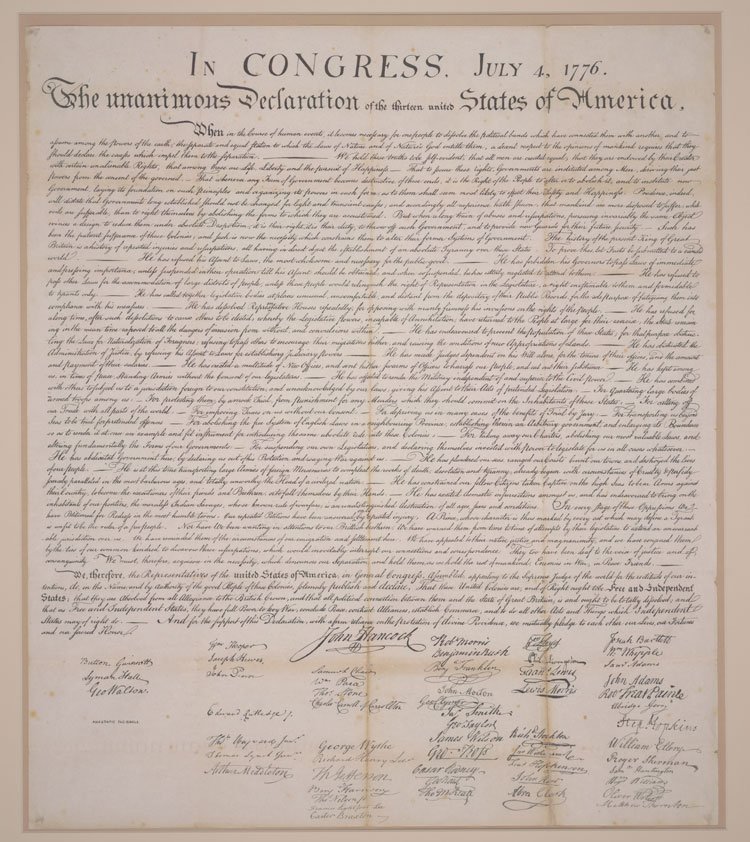The Tompkins County Museum of Art

The Anastatic Facsimile of The Declaration of Independence. 1846.
The Declaration of Independence, drafted by Thomas Jefferson and signed by members of the Continental Congress, is a seminal text of American history. Formally breaking the colonial ties between America and Great Britain in 1776, the Declaration at once announces the birth of the new country, states its political philosophy, and lodges grievances against the King of England that justify the separation.
Considered to be one of the truest copies of the Declaration of Independence, this anastatic facsimile was created in 1846 by commercial printer Lloyd P. Smith of Philadelphia. It was made by laying the original Declaration face-down on a zinc plate and then applying an acidic solution, which ate away at the zinc wherever there was no ink imprint from the text. The result was a highly accurate mirror image of the Declaration on the zinc plate, from which only a very small number of prints survive (one of which is on display at Independence Hall in Philadelphia).
The original Declaration of Independence is housed at the National Archives in Washington, DC, and is in markedly poor condition, with the ink badly faded. While a number of factors have played a role in its deterioration, the anastatic process itself almost certainly contributed. Prized for producing extremely accurate copies, the primitive printing process was known to damage or even destroy the original source document. Thus, this facsimile is imbued with further historical significance, not only for its remarkable accuracy but also for its part in rendering the original almost illegible.
The Tompkins County
Museum of Art (Avenue of the Friends)
101 East Green
Street, Ithaca, NY